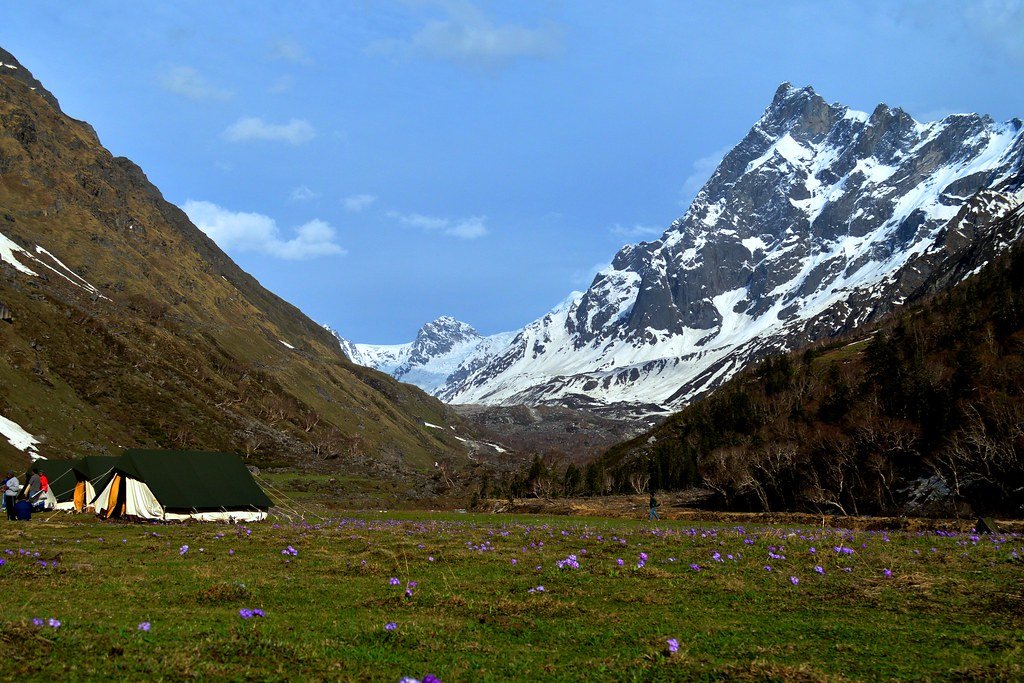Places To Visit In Mandu | Things To Do
Mandu, also known as Mandav or Mandavgad, is a historic fort town located in the Malwa region of Madhya Pradesh, India. Nestled amidst the Vindhya Range, Mandu is renowned for its picturesque landscapes and rich cultural heritage. The town’s history dates back to the 6th century when it was initially established as a military fortress. Over the centuries, Mandu evolved into a vibrant city under the rule of various dynasties, including the Paramaras, the Delhi Sultanate, and the Mughals.

Mandu is dotted with architectural marvels that reflect its glorious past. The prominent landmarks include the Jahaz Mahal, a stunning palace resembling a ship floating on water, and the Hindola Mahal, an elegant structure with sloping walls. The romantic tales of Baz Bahadur and Rani Roopmati are associated with Mandu, adding a touch of love and folklore to its charm.
Best Places To Visit In Mandu:
Mandu, or Mandavgarh, stands as a ruined city nestled at an elevation of 2,000 feet amid the picturesque Vindhya mountain range. Renowned for its architectural splendors and rich historical significance, Mandu is a captivating destination.
Here are some must places to visit palces in Mandu.
1. Jahaz Mahal:
Constructed in the latter half of the 15th century, Jahaz Mahal stands as a palace situated in Mandu, It was commissioned by Sultan Ghiyasuddin Khilji. Known as the “Ship Palace,” its distinctive design resembles a ship floating on twin ponds. Originally a harem for the royal court, the palace boasts intricate stone carvings, elegant arches, and symmetrical corridors. Its strategic location and panoramic views make it a captivating destination, showcasing the grandeur of Mandu’s medieval Afghan sultans. please note that it is open from 6 AM to 7 PM. The entry fee is INR 5 for Indian visitors and INR 100 for foreigners.

2. Hindola Mahal:
4. Baz Bahadur’s Palace:
Baz Bahadur’s Palace, a 16th-century architectural gem, graces the historic city of Mandu. in Commissioned by Nasir-ud-Din, the Sultan of Malwa, in 1508, this palace is closely associated with Baz Bahadur, the final independent ruler of Mandu, renowned for his passion for music and art. It was during his rule that Baz Bahadur fell in love with the enchanting Hindu shepherdess named Roopmati and also orchestrated the construction of Rewa Kund, a reservoir complete with an aqueduct leading to the Narmada. The visiting hours are either from 7:00 am to 7:00 pm or from 8:00 am to 6:00 pm. The entrance fee is Rs 5 for Indian visitors and Rs 100 for foreigners during the first set of hours, or Rs 25 for Indians and Rs 300 for foreigners during the second set of hours.

5. Ashrafi Mahal:
6. Jami Masjid:
8. Shri Mandavagadh Teerth:
9. Nilkanth Mahal:
Nilkanth Mahal, or Nilkanth Temple, stands as a testament to Mughal architecture in Mandu, Erected in 1574 AD by the Mughal Governor of Mandu, Shah Badgah, it was commissioned for Empress Mariam-uz-Zamani, the favored wife of Mughal Emperor Akbar. This temple, dedicated to Lord Shiva, has become a revered Hindu pilgrimage site. Adjacent to the ancient shrine of Lord Shiva, the palace, also known as Imarat-i-Dilkhusha (the heart-pleasing abode), encompasses the sacred shrine itself. The structure showcases a unique blend of Afghan and Indian architectural styles, featuring impressive arches, domes, and ornate carvings. Perched atop a hill, Nilkanth Mahal offers breathtaking panoramic views of the surrounding landscape. The palace served both as a pleasure pavilion and a reservoir, adding to its historical significance. Today, visitors are drawn to Nilkanth Mahal to appreciate its historical charm and marvel at the architectural prowess that defines Mandu’s rich cultural heritage. The visiting hours for Nilkanth Mahal are from 8 AM to 6 PM, with an entry fee of Rs. 5 for Indian visitors and Rs. 100 for foreigners.

10. Dai ka mahal:
11. Hoshang shah & Tomb:
Hoshang’s Tomb, situated in the historic city of Mandu, serves as the burial site of Hoshang Shah, Constructed in the 15th century, Hoshang Shah’s Tomb was built by Sultan Hoshang Shah Ghori and his successor Muhamad Khilji. the tomb stands as an exemplary creation of early Indo-Islamic architecture. Adorned with detailed marble carvings, lattice screens, and a magnificent dome, it represents a harmonious fusion of Indian and Islamic architectural styles. The tomb is known for its elegant Afghan architecture, featuring a white marble dome and intricate lattice work. The mausoleum is surrounded by a well-maintained garden, adding to its serene ambiance. Hoshang Shah’s Tomb is a prominent attraction in Mandu, drawing visitors to admire its architectural beauty and explore the historical legacy it represents. The tomb welcomes visitors every day from 7:00 am to 6:00 pm. The entry fee is Rs. 25 for Indian visitors and Rs. 300 for foreigners. Additionally, there is an extra charge of Rs. 25 for the use of video cameras.

12. Echo Point:
Echo Point stands as a well-visited tourist destination in Mandu, Positioned along the route to Roopmati Pavilion and Bez Bahadur Palace, locals share that historically, this point served as a means to convey messages to the residing sisters or families. When speaking loudly while facing Dai’s Palace in front of the Sagar Talab, visitors can enjoy the fascinating phenomenon of their words echoing multiple times, creating an entertaining experience suitable for all ages. The location is accessible to visitors daily from 6:00 am to 7:30 pm.

13. Champa baoli:
14. Dilawar Khan ‘s mosque:
Dilawar Khan’s Mosque in Mandu is a historical gem that reflects the architectural grandeur of the region. Constructed during the 15th century by Dilawar Khan, a governor of the Malwa region, the mosque showcases a unique blend of Afghan and Indian architectural styles. Its distinctive features include large domes, intricately designed mihrabs, and elegant minarets. The mosque stands as a testament to Mandu’s rich cultural and historical heritage, drawing visitors to appreciate its intricate craftsmanship and the historical legacy it represents. Dilawar Khan’s Mosque remains a significant landmark, offering a glimpse into the architectural marvels of Mandu’s past. The mosque welcomes visitors from 6 AM to 7 PM, with an entry fee of Rs. 25 for Indian visitors and Rs. 100 for foreigners.

15. Darwazas of Mandu:
Mandu, an ancient fort city in Madhya Pradesh, is renowned for its impressive Darwazas (gates) that served both defensive and aesthetic purposes. The various gates, such as Delhi Darwaza, Alamgir Darwaza, and others, are architectural marvels with unique designs and historical significance. These gates showcase a blend of Afghan and Indian architectural styles, featuring large archways, intricate carvings, and imposing structures. The Darwazas not only served as entry points to the fortified city but also stood as symbols of the city’s cultural richness and strategic importance. Today, they attract visitors, providing a glimpse into Mandu’s historical grandeur and architectural prowess. The Darwazas of Mandu are open for visits from 6:00 AM to 6:00 PM, and the entrance fee is Rs. 10 for Indian nationals and Rs. 250 for foreign nationals per person.

16. Kakra Khoh Waterfall:
17. Andha Andhi ka Mahal:
Andha Andhi ka Mahal, located in Mandu, is a historical monument housing the tomb of Hazrat Sheeran Manjum Baba Bharang, a revered saint and poet. His loss of eyesight occurred during an attack on Mandu in 1598, leading to his subsequent passing. Translating to “the palace of the blind and the blindfolded” in Hindi, the monument is situated near the Seven Kothis, providing a scenic view of the valley. Open from 6 AM to 7 PM, Andha Andhi ka Mahal graciously welcomes visitors without any entry fee.

18. Malik Mughith Masjid:
Malik Mughith Masjid stands as an ancient mosque in Mandu, constructed in 1432 by Malik Mughith, the father of Sultan Mahmud Khilji of Malwa. Exemplifying Indo-Islamic architecture, the mosque seamlessly incorporates both Hindu and Muslim design elements. Featuring a spacious courtyard, a prayer hall, and a balcony, the mosque’s aesthetic is a harmonious blend of cultural styles. Situated near Sagar Talao Lake, Malik Mughith Masjid warmly welcomes visitors from 6 AM to 7 PM. The entry fee is Rs. 25 for Indian nationals and Rs. 100 for foreigners.

19. Ujali Baodi:
Ujali Baodi, a historical stepwell situated in Mandu, is also referred to as Ujala Baodi, translating to the “bright” or “lighted” well. Constructed in the 15th century by Ghiyas-ud-din Khilji, the Sultan of Malwa, it boasts two sets of steps on opposite sides leading to the water level. Arched landings are strategically placed at various levels for the convenience of water carriers. An additional pavilion on the south side served as a watch post for royal guards. Ujali Baodi, with its architectural significance and picturesque setting, attracts tourists and provides an ideal spot for photography. Ujali Baodi welcomes visitors every day from 6 am to 6 pm. There is no entry fee to explore the well.

20. Lohani Caves & Temple:

21. Gada Shah Palace:
22. Chhappan Mahal Museum:
23. Carvan Sarai:
24. Taveli Mahal:
25. Elephant Palace (Hathi Mahal):
The Elephant Palace, also known as Haathi Mahal, stands as a historic monument in Mandu, Originally constructed by the Malwa dynasty for opulent purposes, the palace underwent a transformation into a mausoleum later on. This grand structure resembles a colossal rock-shaped elephant, deriving its name from the substantial pillars that provide support. Exhibiting Indo-Islamic architectural style, the palace is perched at an elevation of 600 meters above sea level. Within the vicinity of Sagar Talab and the village, Hathi Mahal houses several mausoleums and inns. The name “Hathi Paga Mahal” is derived from the round pillars resembling elephant’s feet in the lateral part of the palace. Originally designed as an Aaram Gah (resting place), the palace later took the form of a mausoleum. Elephant Palace (Hathi Mahal) is open for visits from 8 AM to 6 PM. The entrance fee is Rs. 25 for Indian visitors and Rs. 300 for foreigners.

26. Nahar Jharokha:
How To Reach Mandu From Delhi
- By Air:
- The nearest airport to Mandu is Devi Ahilya Bai Holkar Airport (IDR) in Indore, which is well-connected to major cities, including Delhi.
- You can book a flight from Indira Gandhi International Airport (DEL) in Delhi to Indore. The flight duration is approximately 1.5 to 2 hours.
- From Indore Airport, you can hire a taxi or take a bus to reach Mandu. The distance between Indore and Mandu is around 90 kilometers.
- By Train:
- The nearest major railway station to Mandu is Indore Junction (INDB).
- You can board a train from New Delhi Railway Station (NDLS) to Indore Junction. The train journey takes around 8 to 10 hours.
- From Indore Junction, you can hire a taxi or take a bus to reach Mandu.
Here Are Some Trains From Delhi To Indore:
| Train Name | Train Number | Departure Time | Arrival Time | Charges |
|---|---|---|---|---|
| NDLS INDB EXP | 12416 | 9:50 PM | 11:40 AM | ₹824 |
| UHP INDB SF EXP | 22942 | 3:10 PM | 5:15 AM | ₹821 |
| ASR INDB EXP | 19326 | 10:05 AM | 2:35 AM | ₹822 |
| DDN INDB EXP | 14318 | 1:40 PM | 6:50 AM | ₹868 |
| MALWA EXPRESS | 12920 | 7:15 PM | 12:40 PM | ₹964 |
| CDG INDB EXP | 19308 | 11:35 PM | 5:35 PM | ₹875 |
| DEE INDB EXP | 19338 | 3:00 PM | 9:35 AM | ₹931 |
3. By Road:
- Mandu is well-connected by road, and you can drive or take a bus from Delhi.
- The road distance between Delhi and Mandu is approximately 800 kilometers, and the journey can take around 14 to 16 hours by road, depending on the route and traffic conditions.
- You can also consider hiring a taxi or using inter-city bus services to reach Mandu from Delhi.
Nearby Places To Visit:
Related Articles:
Shivpuri Madhya Pradesh: A Dream Destination for Nature Lovers
Bhojpur | Best Places To Visit | How To Reach | Bhojpur Temple
Maihar Devi Temple: Complete Travel Guide | How To Reach | Things To Do

















